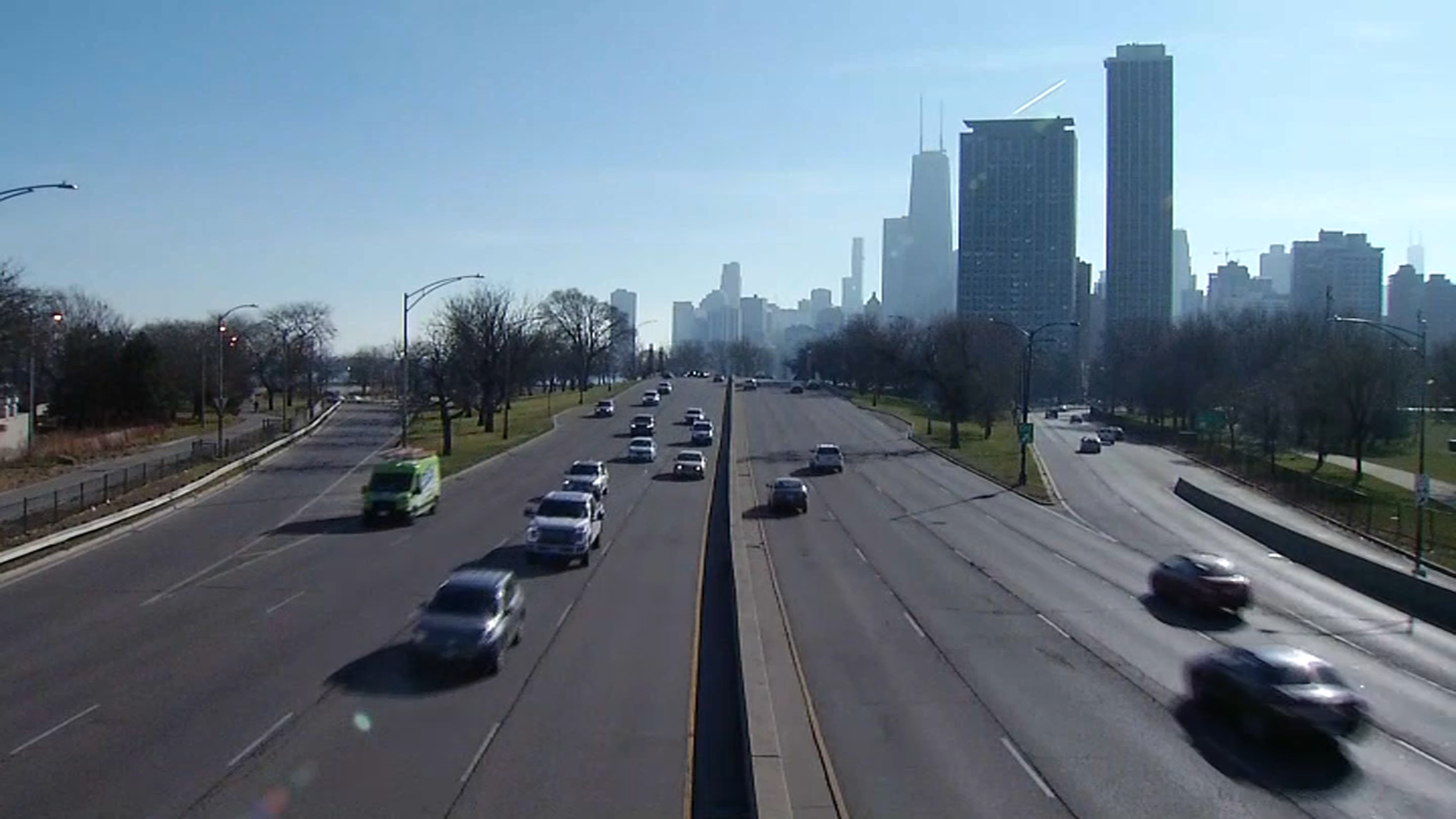Editor's Note: Thursday morning, the Federal Aviation Association issued a ground stop at LaGuardia for incoming flights due to "weather, low visibility." If you're traveling to or from the east coast, be sure to check your flight.
On air quality maps, purple signifies the worst of it. In reality, it’s a thick, hazardous haze that’s disrupting daily life for millions of people across the U.S. and Canada, blotting out skylines and turning skies orange.
And with weather systems expected to hardly budge, the smoky blanket billowing from wildfires in Quebec and Nova Scotia and sending plumes of fine particulate matter as far as Chicago to west and North Carolina to the south should persist into Thursday and possibly the weekend.
MORE: How to check Chicago's air quality as smoky skies from Canadian wildfires blanket US
Feeling out of the loop? We'll catch you up on the Chicago news you need to know. Sign up for the weekly Chicago Catch-Up newsletter here.
That means at least another day, or more, of a dystopian-style detour that’s chased players from ballfields, actors from Broadway stages, delayed thousands of flights and sparked a resurgence in mask wearing and remote work — all while raising concerns about the health effects of prolonged exposure to such bad air.
"Tonight’s Yankees-White Sox game (Wednesday, June 7) is rescheduled because of poor air quality due to smoke from the Canadian wildfires," a tweet from the Yankees Twitter account said, as photos and video from inside and outside Yankee Stadium Tuesday and Wednesday captured yellow, brownish skies hovering over the field.
Local
The weather system that’s driving the great Canadian-American smoke out — a low-pressure system over Maine and Nova Scotia — “will probably be hanging around at least for the next few days,” U.S. National Weather Service meteorologist Bryan Ramsey said.
“Conditions are likely to remain unhealthy, at least until the wind direction changes or the fires get put out,” Ramsey said. “Since the fires are raging — they’re really large — they’re probably going to continue for weeks. But it’s really just going be all about the wind shift.”
Across the eastern U.S., officials warned residents to stay inside and limit or avoid outdoor activities again Thursday, extending “Code Red” air quality alerts in some places for a third-straight day as forecasts showed winds continuing to push smoke-filled air south.
Wednesday, federal officials paused some flights bound for New York’s LaGuardia Airport and slowed planes to Newark and Philadelphia because smoke was limiting visibility. Thursday morning, the Federal Aviation Association issued a ground stop at LaGuardia for incoming flights due to "weather, low visibility."
"Reduced visibility from wildfire smoke will continue to impact air travel today. "We have paused flights from the Northeast, Ohio and Mid-Atlantic bound for," a tweet from the agency at 6:37 a.m. read.
In the Chicago area, high ozone levels, combined with smoke from wildfires led to air quality alerts and hazy skies Monday. By Wednesday, the smoke across the city and the suburbs had reduced from a thick to a moderate level.
Thursday though, the smoke level teetered higher, a map of smoke and wildfires from NOAA shows.
To the east in Indiana, the levels are even worse. "Poor air quality is expected today in Indiana, primarily due to lingering wildfire smoke in the area," a tweet from the National Weather Service said early Thursday. "Those with chronic respiratory illnesses should limit their time outdoors.
Where are the wildfires burning?
149 of wildfires are burning across western provinces to Quebec, with 110 of them out of control.
The Quebec-area fires are big and relatively close, about 500 to 600 miles (roughly 800 to 970 kilometers) away from Rhode Island and close to 1,000 miles from Chicago. And they followed wildfires in Nova Scotia, which resulted in a short-lived air quality alert on May 30.
Canadian officials say this is shaping up to be the country’s worst wildfire season ever. It started early on drier-than-usual ground and accelerated quickly. Smoke from the blazes has been lapping into the U.S. since last month but intensified with recent fires in Quebec, where about 100 were considered out of control Wednesday.
“I can taste the air,” Dr. Ken Strumpf said in a Facebook post from Syracuse, New York, where the sky took on the colorful nickname of the local university: Orange.
The smoke was so thick in Canada’s capital, Ottawa, that office towers just across the Ottawa River were barely visible. In Toronto, Yili Ma said her hiking group canceled a planned hike this week, and she was forgoing the restaurant patios that are a beloved summer tradition in a nation known for hard winters.
“I put my mask away for over a year, and now I’m putting on my mask since yesterday,” Ma lamented.
Eastern Quebec got some rain Wednesday, but Montreal-based Environment Canada meteorologist Simon Legault said no significant rain is expected for days in the remote areas of central Quebec where the wildfires are more intense.
Why is smoke reaching so far away?
Strong winds high up in the atmosphere can transport smoke long distances and it’s common for large, violent fires to create unhealthy conditions hundreds of miles away from where forests are burning.
But the right mix of circumstances had to align for the smoke to blanket major U.S. cities: A dry, hot spring set the stage. Then weather did the rest, said Bob Henson, meteorologist with Yale Climate Change Connections.
In Canada, air is circulating counterclockwise around a low pressure system near Nova Scotia. That sends air south over the fires in Quebec. There the air picks up smoke, and then turns east over New York state, carrying smoke to the eastern seaboard.
“It’s a simple matter of trajectory,” Henson said. “The smoke goes where the wind takes it.”
This wind pattern isn’t particularly rare. But the confluence of events is.
“The timing of this weather patterns is unfortunately overlapping with a situation that was ripe for large fires,” Thornton said.
Weather patterns change and the worst conditions should only last a day or two. Some smoke, however, could linger for a week or more, according to experts.
Genesis of the smoke
Unusually hot, dry weather that wouldn’t stop gave rise to the wildfires.
“The month of May was just off the charts — record warm in much of Canada,” said Eric James, a modeling expert with the Cooperative Institute for Research in Environmental Science at the University of Colorado, who is also with the National Oceanic and Atmospheric Administration.
A warming planet will produce hotter and longer heat waves, making for bigger, smokier fires, according to Joel Thornton, professor and chair of the department of atmospheric sciences at the University of Washington.
The Quebec-area fires are big and relatively close, about 500 to 600 miles (roughly 800 to 970 kilometers) from Rhode Island and they followed wildfires in Nova Scotia.
“I don’t remember fires of this scale in the last 10 years,” James said of the Quebec blazes.
Smoke from fires in western Canada have been drifting into the United States for weeks. But it’s recent fires in Quebec that have produced the dangerous east coast haze.



